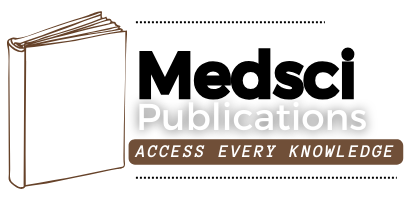Assessing Job Stress Among Emergency Department Healthcare Professionals in India: A Cross-Sectional Study
DOI:
https://doi.org/10.55489/njmr.150220251080Keywords:
Occupational stress, Emergency healthcare providers, Workforce resilience, Psychosomatic symptoms, Burnout preventionAbstract
Background: Emergency healthcare professionals work in high-stress environments, facing long hours, traumatic events, and limited resources, resulting in psychological and physiological distress. This study assesses job-related stress among emergency healthcare providers in India and identifies key stressors.
Methods: A cross-sectional study was conducted from March to June 2024, including 114 emergency healthcare workers. Stress levels were measured using the Stress Parameters and Manifestations Scale (SPMS), a 20-item tool assessing self-awareness, interpersonal relationships, psychosomatic symptoms, and clinical manifestations on a 5-point Likert scale. Higher scores indicate greater stress. Data were analyzed using SPSS 23.0, with t-tests and ANOVA, and significance set at p <0.05.
Results: The cohort comprised 52.2% males, 80.5% doctors, and 71.7% from medical colleges. High workload perception (62.0%), sleep disturbances (41.6%), and low mood post-patient interactions (42.4%) were prevalent. Psychosomatic symptoms such as palpitations (40.7%) and persistent sleepiness (42.5%) were common. Females reported significantly higher self-awareness (p <0.001) and overall stress (p = 0.023). Those working over 16 hours daily had the highest stress, particularly in clinical manifestations (p = 0.017).
Conclusion: Emergency healthcare workers experience significant occupational stress, highlighting the need for structured schedules, mental health support, and stress management strategies to improve workforce resilience.
References
1. García-Tudela Á, Simonelli-Muñoz AJ, Rivera-Caravaca JM, et al. Stress in emergency healthcare professionals: the stress factors and manifestations scale. Int J Environ Res Public Health. 2022;19(7): 4342. DOI: https://doi.org/10.3390/ijerph19074342 PMid:35410024 PMCid:PMC8998299 DOI: https://doi.org/10.3390/ijerph19074342
2. Alshammari SO, Alamri KN, Alshammary BD, Shahin MH. Job stress among the nurses of the emergency department at King Fahad specialist hospital in Buraidah city. Journal of Positive School Psychology. 2022;6(10): 555-571
3. Podvorica E, Rrmoku B, Metaj A, Gashi H. Level of stress at nurses working in emergency clinic and central intensive care: university clinical centre of Kosovo. Open Journal of Emergency Medicine. 2020;08(02): 39-52. DOI: https://doi.org/10.4236/ojem.2020.82005
4. Iannello P, Balzarotti S. Stress and coping strategies in the emergency room. Emergency Care Journal. 2014;10(2): 72-75. DOI: https://doi.org/10.4081/ecj.2014.3788 DOI: https://doi.org/10.4081/ecj.2014.3788
5. Jiaru J, Yanxue Z, Wennv H. Incidence of stress among emergency nurses: A systematic review and meta-analysis. Medicine. 2023;102(4):e31963. DOI: https://doi.org/10.1097/MD.0000000000031963 PMid:36705357 PMCid:PMC9875949 DOI: https://doi.org/10.1097/MD.0000000000031963
6. Hetherington D, Wilson NJ, Dixon K, Murphy G. Emergency department nurses' narratives of burnout: Changing roles and boundaries. International emergency nursing. 2024;74(1): 101439-9. DOI: https://doi.org/10.1016/j.ienj.2024.101439 PMid:38581856 DOI: https://doi.org/10.1016/j.ienj.2024.101439
7. Yuwanich N, Akhavan S, Nantsupawat W, Martin L. Experiences of occupational stress among emergency nurses at private hospitals in Bangkok, Thailand. Open Journal of Nursing. 2017;07(06): 657-70. DOI: https://doi.org/10.4236/ojn.2017.76049 DOI: https://doi.org/10.4236/ojn.2017.76049
8. Lv C, Gan Y, Feng J, et al. Occupational stress of physicians and nurses in emergency departments after contracting COVID-19 and its influencing factors: a cross-sectional study. Frontiers in Public Health. 2023;18(11): 74-9. DOI: https://doi.org/10.3389/fpubh.2023.1169764 PMid:37275504 PMCid:PMC10232976 DOI: https://doi.org/10.3389/fpubh.2023.1169764
9. Podvorica E, Rrmoku B, Metaj A, Gashi H. Level of stress at nurses working in emergency clinic and central intensive care: university clinical centre of Kosovo. Open Journal of Emergency Medicine. 2020;08(02):39-52. DOI: https://doi.org/10.4236/ojem.2020.82005 DOI: https://doi.org/10.4236/ojem.2020.82005
10. Alshammari B, Alanazi NF, Kreedi F, et al. Exposure to secondary traumatic stress and its related factors among emergency nurses in Saudi Arabia: a mixed method study. BMC nursing. 2024;23(1): 337. DOI: https://doi.org/10.1186/s12912-024-02018-4 PMid:38762742 PMCid:PMC11102619 DOI: https://doi.org/10.1186/s12912-024-02018-4
11. Montero-Tejero DJ, Jiménez-Picón N, Gómez-Salgado J, et al. Factors Influencing Occupational Stress Perceived by Emergency Nurses During Prehospital Care: A Systematic Review. Psychol Res Behav Manag. 2024;17:501-528. DOI: https://doi.org/10.2147/PRBM.S455224 PMid:38374938 PMCid:PMC10874882 DOI: https://doi.org/10.2147/PRBM.S455224
12. Botha E, Gwin T, Purpora C. The effectiveness of mindfulness based programs in reducing stress experienced by nurses in adult hospital settings: a systematic review of quantitative evidence protocol. JBI Database System Rev Implement Rep. 2015;13(10):21-9. DOI: https://doi.org/10.11124/jbisrir-2015-2380 PMid:26571279 DOI: https://doi.org/10.11124/jbisrir-2015-2380
13. Burr H, Formazin M, Pohrt A. Methodological and conceptual issues regarding occupational psychosocial coronary heart disease epidemiology. Scand J Work Environ Health. 2016;42(3):251-5. DOI: https://doi.org/10.5271/sjweh.3557 PMid:26960179 DOI: https://doi.org/10.5271/sjweh.3557
14. Boitet LM, Meese KA, Hays MM, Gorman CA, Sweeney KL, Rogers DA. Burnout, Moral Distress, and Compassion Fatigue as Correlates of Posttraumatic Stress Symptoms in Clinical and Nonclinical Healthcare Workers. J Healthc Manag. 2023;68(6):427-451. DOI: https://doi.org/10.1097/JHM-D-23-00098 PMid:37944174 DOI: https://doi.org/10.1097/JHM-D-23-00098
Downloads
Published
How to Cite
Issue
Section
License
Copyright (c) 2025 Kanchala Maithreyi, Vijay Kumar SS, Ananth Prasad Rao HT

This work is licensed under a Creative Commons Attribution-ShareAlike 4.0 International License.
Author/s retain the copyright of their article, with first publication rights granted to Medsci Publications.









